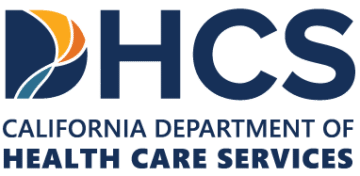


We don’t need to rely on research to tell us that trauma can have clear and serious problems for learning and behavior. The thing is, research helps cement just how important the issue is.
Did you know approximately 61% of adults surveyed in 25 states said they had been exposed to at least one type of ACE in their life, and nearly one in six said they had been exposed to four or more types of ACEs?
When you’re stuck in the mire of uncertainty and fear, it’s difficult to know how to get help. One of the first steps you could make is taking a childhood trauma test, which could help break the cycle and start you on your healing journey.
Keep reading to find out everything you need to know about the correlation between childhood neglect, abuse, and mental health.
Adverse childhood experiences, or ACEs, are painful and potentially traumatizing events that occur during childhood, or between the years 0-17.
The term ACE was coined as part of a large (over 17,000 participants) study undertaken by the Centers for Disease Control and Prevention and Kaiser Permanente. Researchers discovered ten ACEs of trauma that affect the great majority of victims.
People who have dealt with more than one of these concerns may suffer from developmental trauma, often known as complex trauma. They are also at a higher risk of developing mental and physical illnesses.
Some groups are at more risk than others to experience ACEs. For example, women and several minority groups are at a greater risk of experiencing 4 or more types of ACEs. The cost of ACEs is not only substantial on a personal and emotional front, but they end up costing families, communities, and society billions every year.
Outside of the 10 subcategories of ACEs, we can identify three umbrella categories. These are:
Abuse can take the form of physical, emotional, or sexual abuse, and neglect relates to physical and emotional neglect. Household dysfunction applies to situations involving mental illness, an incarcerated relative, substance abuse, divorce, and violence against mother figures in the home.
The original study occurred in the mid-1990s with a group of patients insured through Kaiser Permanente. This first study looked at how stressful childhood events could have a negative impact on adult health. The 17,000 people who took part in the survey were asked about their childhood maltreatment, family dysfunction, and current health and behavior.
They developed a pyramid diagram from this, which illustrates how the ACEs a person encounters relate to their well-being throughout their life. The ACE study discovered a relationship between childhood trauma and the emergence of chronic disease, incarceration, and employment difficulties in adults. The more ACEs you have, the more likely you are to have negative side effects.
The RYSE Center updated the pyramid in 2015 to include two layers on the bottom that account for the influence of past trauma and social location in relation to a person’s health. This updated model is more in line with the Social-Ecological Model and considers the effects of each sphere on ultimate health outcomes.
Following studies, like the one by the Philadelphia ACE Project, have broadened the research to include demographics like inner-city adolescents, as well as the consequences of generational trauma.
In the first study, 69.9% of the 17,000 participants had at least one ACE, whereas the enlarged Philadelphia study found that 83.2% of participants had at least one ACE. Their expanded ACEs comprised additional factors that measure trauma like bullying, community violence, neighborhood safety, racism, and living in foster care.
The Adverse Childhood Experiences (ACEs) quiz asks a series of ten questions about common childhood traumatic experiences. The questionnaire serves as an indicator of how likely a person is to experience obstacles later in life.
The quiz is an effective tool for increasing awareness about the dangers of ACEs. However, it’s critical to keep in mind that there are some factors of developmental uncertainty that the quiz doesn’t take into account. For starters, the exam doesn’t factor in the issues the Philadelphia study raised, like community violence or even housing insecurity and natural disasters.
However, while the test doesn’t cover the breadth of potentially stressful experiences, a child may face, it is a good benchmark to measure one’s own experiences by.
The higher your test results, the more severe your trauma likely was. While a low score doesn’t mean you won’t suffer long-term effects based on the trauma, a higher score is more likely to present with severe wellbeing impairments later in life.
That being said, there are some considerations we need to make about the test and the fact that there are some important factors missing from it.
Everyone is different. Two children may experience the same adversities but have entirely different reactions. Just because a person has experienced several of the listed ACEs, does not mean that later issues are inevitable, especially when intervention is carried out.
Some children are predisposed to be more sensitive to hardship than others, therefore genetic factors play a role. And having at least one solid relationship with a supportive adult is the most common factor among children who do exhibit resilience.
The ACEs test provides no information regarding whether a child is more or less sensitive to adversity, and it asks no questions about whether the child has had any protective relationships in place to help them cope with stress.
There are a few factors we need to address in relation to the things that are missing from this test. These are:
As a result, the ACEs exam can only tell you who might be at risk for specific later-life issues, not who is at risk.
First, keep in mind that the ACE score isn’t a magic wand; the test is meant more for guidance. It describes one type of risk factor out of several. It doesn’t consider your diet or genetic makeup, or if you smoke or drink heavily, to name just a few factors that may affect your health.
Also, keep in mind that ACE ratings do not account for positive early life experiences that can help a child develop resilience and protect them from the impacts of trauma. According to psychologists, having a loving grandparent, a teacher who understands and believes in you, or a trustworthy friend you can confide in can help lessen the long-term impacts of early trauma.
According to the study, the more difficult your childhood was, the higher your score, and the higher your likelihood is of developing health problems later in life.
These problems could be behavioral, like:
And they could also one related to your physical and mental health:
These could all temporarily relieve their anxiety, depression, guilt, shame, and/or their inability to focus. Nicotine, for example, decreases irritability, improves focus, and soothes depression. Alcohol is a stress reliever. However, there are consequences and risks associated with using drugs, drinking, and even overeating.
We can also hand toxic stress down from one generation to the next. The field of epigenetics shows we are born with a set of genes that may be turned on and off based on our surroundings.
If a child is exposed to toxic stress as a youngster, their stress-response genes are likely to be active, allowing them to be easily triggered by stressful conditions that do not affect children who are not exposed to toxic stress. They could then pass on that response to their children, perpetuating a vicious cycle.
Although there is still much to understand about ACEs and how to prevent and lessen their effects, we all know that adversity isn’t the only type of childhood experience. All of your childhood memories are important. Because of this, researchers have begun to investigate the effects of positive childhood experiences (PCEs) on children and adults in recent years.
In 2019, researchers discovered a link between good childhood experiences and adult mental and relationship health, particularly those who had experienced ACEs. This means that, no matter how much difficulty you’ve faced in your life, a boost of happy early experiences could mean you are less likely to suffer the effects of ACES, even if you grew up with a lot of hardship. If you had no positive experiences and only a few ACEs, the implications are still more likely to manifest.
You may have experienced PCEs, or Positive Childhood Experiences if you:
Learning about ACEs helps us understand why we behave the way we do on a personal level, and that our coping behavior is normal. It’s simply a normal response to abnormal circumstances.
Learning about PCEs can help get you and your community on the road to recovery. PCE education may bring hope to a hopeless situation and stimulate the creation of innovative ideas, particularly when supporting families, organizations, and communities.
Understanding the connection between positive and negative experiences opens up a wealth of possibilities for collaboration across various platforms and industries. Communities can use these new perspectives to develop mindful, healing-centered, and research-informed practices to mitigate the effects of hardship and promote connection and healing.




















